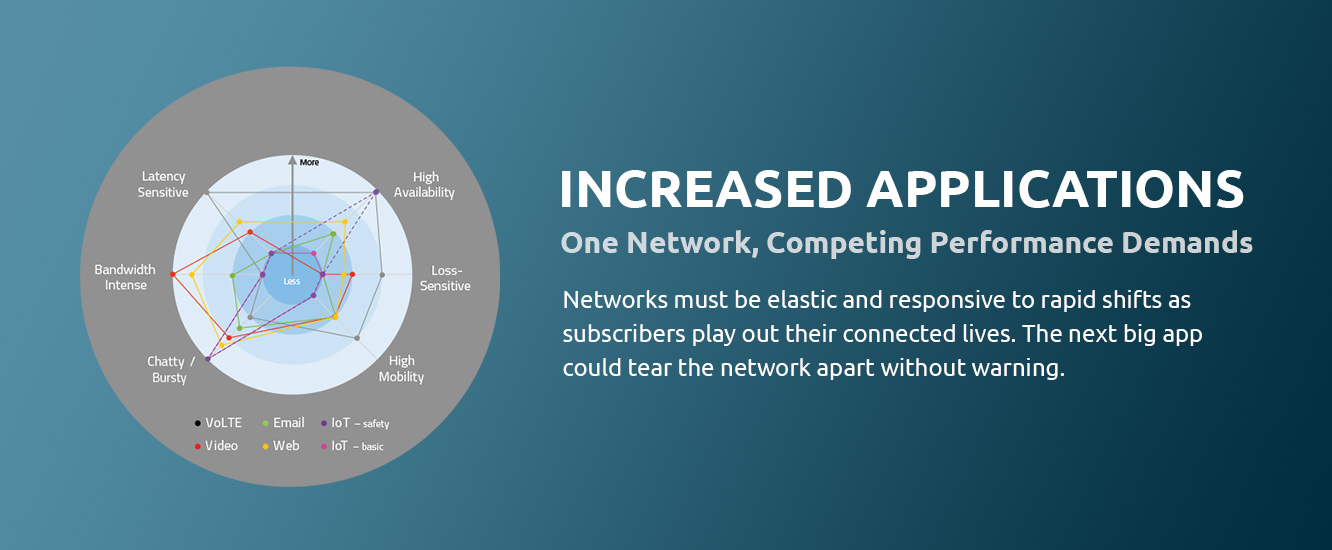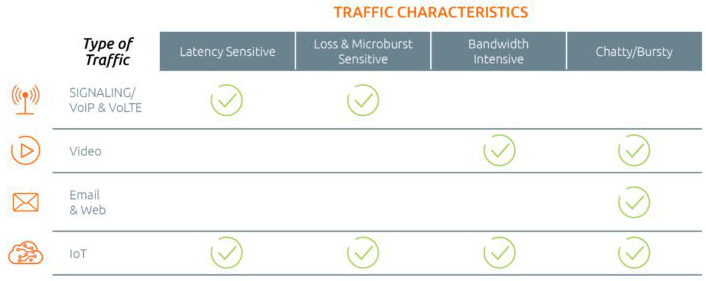Some things get simpler as time goes on. Managing communications networks is not one of those things.
With the move to cloud, software as-a-service (SaaS), and software-defined networking, networks are becoming faster, but the path taken by service and application traffic between the service provider and the user is increasingly distributed, unpredictable, and harder to control.
Applications are also growing in number and diversity. Traffic is becoming more dense. Subscribers rely on networks in increasingly dynamic ways, and at the same time, their expectation of service quality is growing.

This growing complexity creates something of a quandary for service providers. The crux of the challenge is the fact that traffic for different applications behaves differently as application demands vary significantly.

How can a service provider keep all these applications running smoothly, and their customers happy, when there is such variety of traffic characteristics? Clearly, service providers (and enterprises) need better tools with new levels of insight. Legacy network and service performance management solutions are no longer effective.
Challenges facing service providers
Lack of end-to-end visibility isn’t sustainable
Traditional management tools are typically distributed, probe-centric architectures, designed to use SNMP and CLI protocols for monitoring network components like routers, firewalls, switches, and load balancers; and to monitor and analyze bandwidth (traffic) performance and utilization through protocols like NetFlow, sFlow, jFlow, and IP FIX.
But, these legacy protocols do not provide a complete index for measuring what really matters, the quality of experience (QoE) – how well the service is performing for the end user. For example, SNMP extrapolates performance of individual devices only (not end-to-end) using periodically collected data.
Having visibility and a consistent monitoring layer, end-to-end, is necessary to manage quality of experience (QoE) over these discontinuous domains.
Best-effort QoE assurance is no longer good enough
While best-effort QoE assurance has been the accepted standard for internet applications and services, that’s rapidly changing with the quality demands of savvy digital customers today. Customers are no longer tolerant of services being “okay” rather than “excellent.” Even a bad experience with Netflix or YouTube can impact customers’ perception of network quality and lead to churn.
QoE management for on-demand virtualized networks is the future
The shift from traditional to virtualized networks significantly impacts how operators manage QoE. Traditional networking was, for the most part, static; thus, understanding the impact of Layer 2 and 3 issues on QoE was relatively straightforward. Virtualized networks, on the other hand, are dynamic; QoE optimization must be driven in real time by big data analytics and machine learning.
Understanding the relationship between QoS and QoE is critical
Operators are still more comfortable monitoring QoS than QoE, a holdover from traditional telephony performance monitoring. The problem is, customer satisfaction is largely driven by QoE and not QoS. Being unable to monitor QoE puts operators’ business models at risk. And, as customers rely more heavily on mobile connectivity as a way of life, QoE is fast becoming the competitive differentiator.
Combining active and passive monitoring for better end-to-end visibility
For complete, end-to-end visibility into and control over both network performance and customer experience (QoE), service providers need to use instrumentation that combines two types of monitoring:
- Active monitoring to perform end-to-end monitoring between nodes. It relies on probes injected into the network, with a large number of test packets recorded to calculate key performance indicators (KPIs) like packet loss and latency.
- Passive monitoring, which is microscopic in that it analyzes every packet through a measurement node (for example, a switch or router) and helps providers understand traffic characteristics, enhancing forensics and troubleshooting. However, it also adds the macroscopic viewpoint in that it monitors overall traffic flows and is used for traffic engineering.
Effective QoE management is possible, with analytics and automation
What is the best use for the potentially billions of KPIs generated daily by end-to-end network monitoring using active, virtualized probes? Big data analytics makes light work of this problem, allowing correlations between layers and events—through predictive trending and root cause determination—to be automated, and displayed in real-time.
Since the next generation of mobile networks requires automation to run optimally, having centralized network performance and QoE metrics in the operator’s big data infrastructure provides the necessary feedback for SDN control to make network configuration decisions that deliver the best experience to each customer, at any time.
That’s the ultimate goal for LTE-A and 5G: breathtaking performance over a highly dynamic, virtualized network, without humans getting in the way.
Experience performance
Accedian gives enterprises and service providers the tools to gain complete visibility of QoS and QoE over the full service lifecycle, ensuring that they can operate their network with eyes wide open, seeing every detail of how the network affects customers as it happens.
With quality of experience driving the network, operators can tune performance to new levels of efficiency and reliability, putting customer experience first.

 Improved delivery, better visibility: How Accedian and VMware are working together to help CSPs navigate the 5G world
Improved delivery, better visibility: How Accedian and VMware are working together to help CSPs navigate the 5G world
 Adding a new dimension of visibility to the Cisco Full-Stack Observability portfolio with Accedian Skylight
Adding a new dimension of visibility to the Cisco Full-Stack Observability portfolio with Accedian Skylight